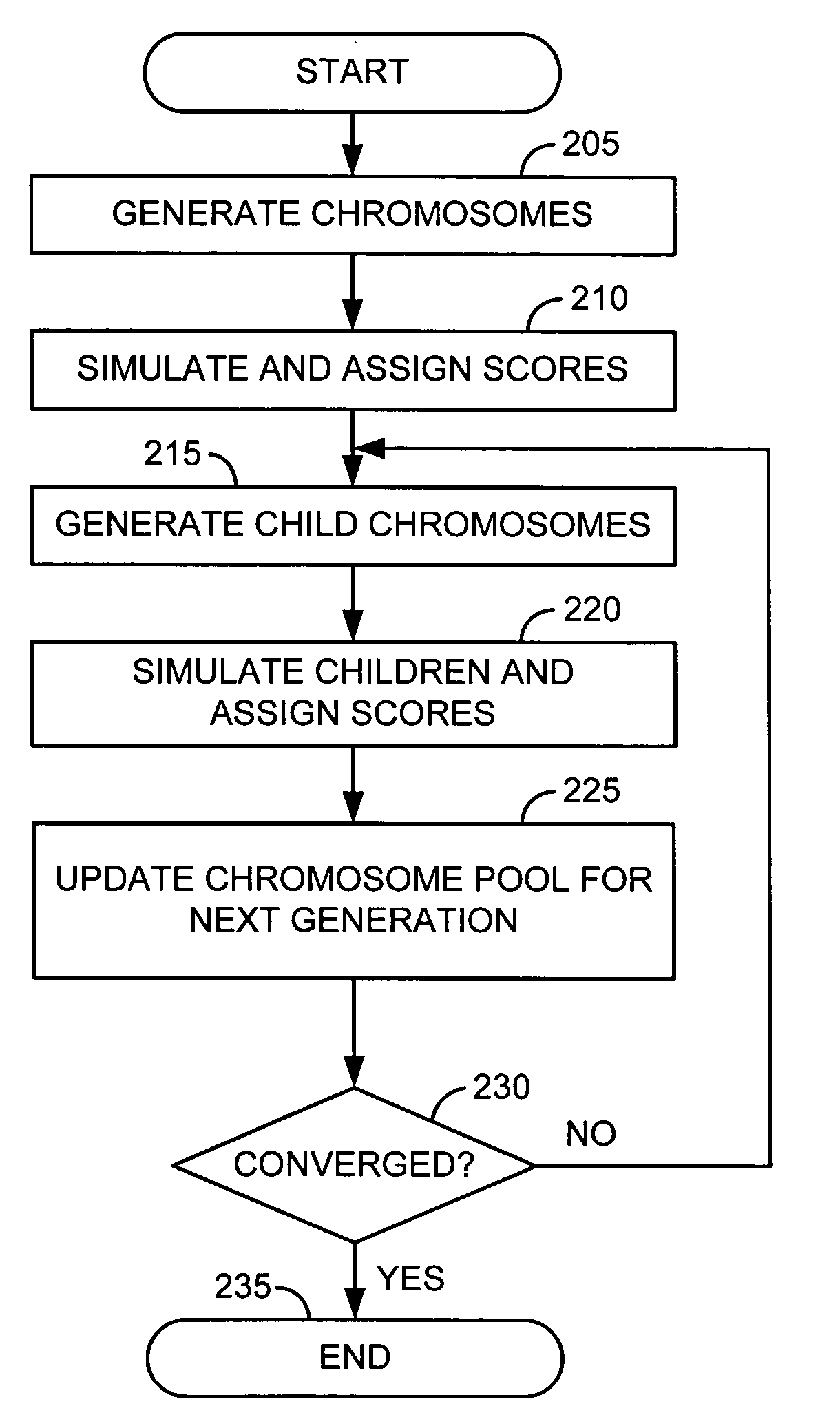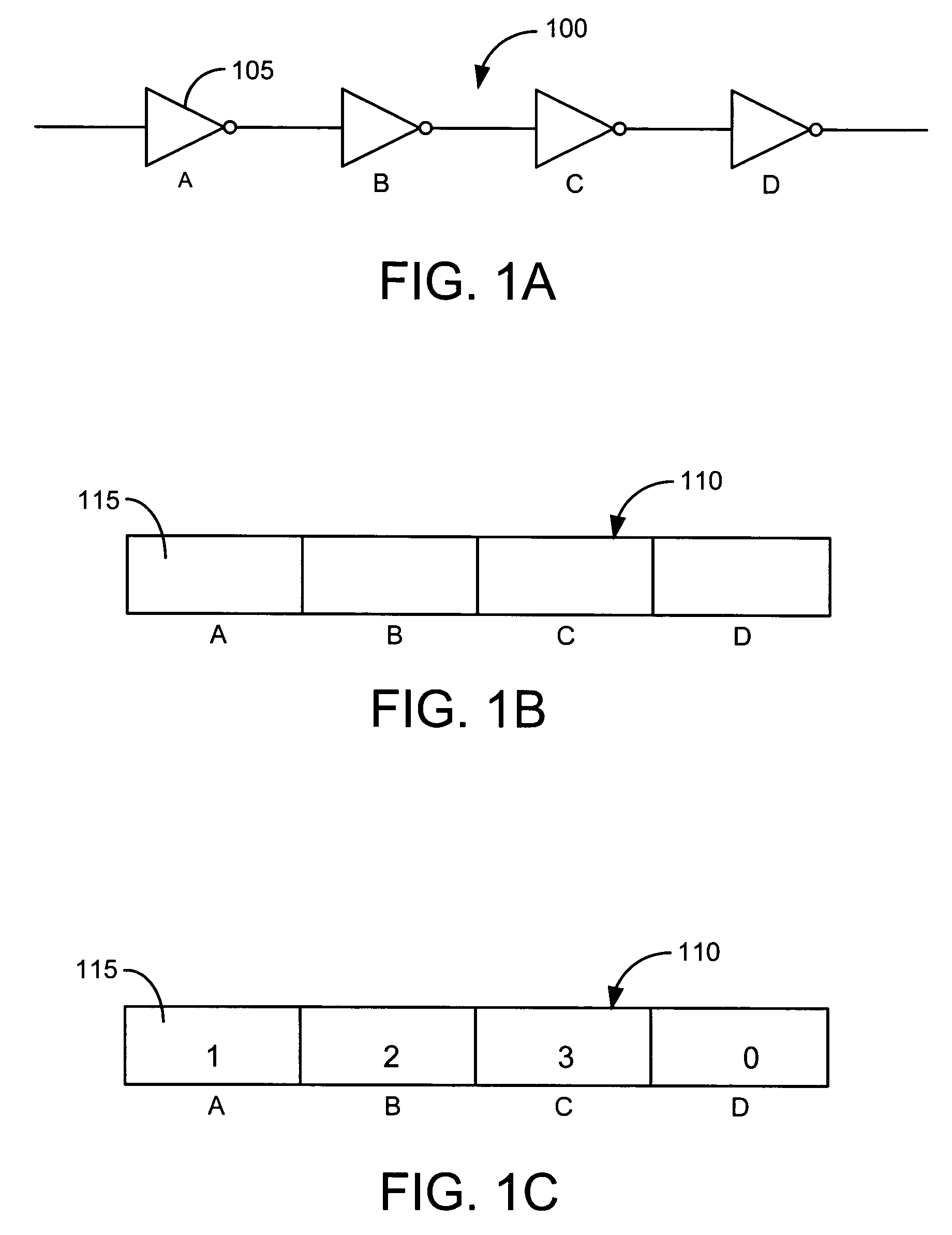Method and system for mapping genes to characteristics in a genetic optimization process
a technology of genetic optimization and mapping genes, applied in the field of genetic optimization techniques, can solve the problems of slow convergence, large solution space of optimization problems, and large size of chromosomes
- Summary
- Abstract
- Description
- Claims
- Application Information
AI Technical Summary
Problems solved by technology
Method used
Image
Examples
Embodiment Construction
[0018] The number of genes per chromosome may be reduced by mapping multiple characteristics to a single gene. Although the embodiments discussed concern the optimization of integrated circuits, the principles of the invention may be applied to any genetic optimization process.
[0019]FIGS. 1A-1C illustrate how, in general, the characteristics of an integrated circuit may be mapped onto a genetic optimization process in accordance with an illustrative embodiment of the invention. FIG. 1A is a gate-level diagram of a simple integrated circuit 100. In this simplified example, integrated circuit 100 comprises four instances (replications of a cell) 105, each of which is an inverter. Each instance 105 is labeled A-D to clarify the relationships among the three figures. Since there are typically multiple design choices (size, cell type, transistor model, etc.) associated with each instance 105, throughout this description each such design choice will be called a “characteristic” of integr...
PUM
 Login to View More
Login to View More Abstract
Description
Claims
Application Information
 Login to View More
Login to View More - R&D
- Intellectual Property
- Life Sciences
- Materials
- Tech Scout
- Unparalleled Data Quality
- Higher Quality Content
- 60% Fewer Hallucinations
Browse by: Latest US Patents, China's latest patents, Technical Efficacy Thesaurus, Application Domain, Technology Topic, Popular Technical Reports.
© 2025 PatSnap. All rights reserved.Legal|Privacy policy|Modern Slavery Act Transparency Statement|Sitemap|About US| Contact US: help@patsnap.com



